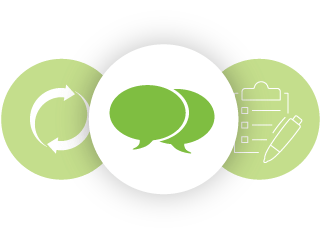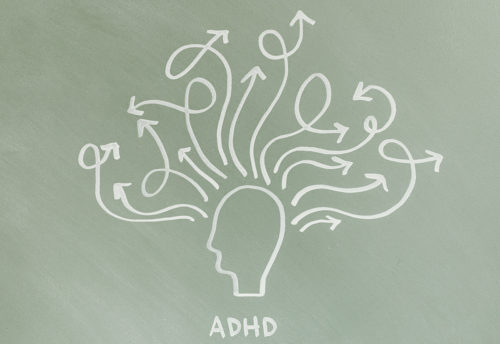Believe in WE
Qbtech gives us data-driven information for improved ADHD diagnoses in teens and adults.
There are many misconceptions about ADHD; what it is, how it affects people, and proper treatment. Most children grow out of ADHD as they get older, and approximately 30% of children diagnosed with ADHD carry their symptoms into adulthood.
Standard ADHD tests can be relatively subjective and rely heavily on patients offering accurate answers. As a result, there may be some wide discrepancies between a diagnosis and the proper treatment.
FDA-cleared Qbtech Testing offers highly researched testing methods to make diagnoses more accurate for teens and adults. A Certus care provider must provide a prescription for testing, and testing will not be scheduled without that authorization. Children under 13 may be considered for testing after meeting with a Certus care provider.

Qbtech ADHD Testing Works — How It Works
Through the use of highly researched data, Qbtech allows us to administer proprietary computer tests that measure core ADHD symptoms including inattention, activity, and impulsivity.
A comparison is done by age and gender to an ADHD control group, allowing us to better understand the severity of symptoms and create a more informed decision about diagnosis and treatment options.
Qbtech evaluation software is FDA approved for ADHD diagnosis and treatment evaluation.

Begin By Being Informed
ADHD Symptoms
Inattention
Six or more symptoms of inattention for children up to age 16, or five or more for adolescents 17 and older and adults; symptoms of inattention have been present for at least six months, are inappropriate for developmental level, and negatively impact directly on social and academic/occupational activities.
Symptoms
- Fails to give close attention to details or makes careless mistakes in schoolwork, at work, or other activities.
- Trouble holding attention on tasks or play activities.
- Does not seem to listen when spoken to directly.
- Often does not follow through on instructions and fails to finish schoolwork, chores, or duties in the workplace (e.g., loses focus, side-tracked).
- Trouble organizing tasks and activities.
- Avoids, dislikes, or is reluctant to do tasks that require mental effort over long periods (such as schoolwork or homework).
- Loses things necessary for tasks and activities (e.g. school materials, pencils, books, tools, wallets, keys, paperwork, eyeglasses, cell phones).
- Easily distracted.
- Often forgetful in daily activities.
Hyperactivity and Impulsivity
Six or more symptoms of hyperactivity-impulsivity for children up to age 16, or five or more for adolescents 17 and older and adults; symptoms of hyperactivity-impulsivity have been present for at least 6 months to an extent that is disruptive and inappropriate for the person’s developmental level and negatively impact directly on social and academic/occupational activities.
Symptoms
- Fidgets with or taps hands or feet, or squirms in seat.
- Leaves seat in situations when remaining seated is expected.
- Runs about or climbs in situations where it is not appropriate (adolescents or adults may be limited to feeling restless).
- Unable to play or take part in leisure activities quietly.
- Often “on the go” acting as if “driven by a motor”.
- Talks excessively.
- Blurts out an answer before a question has been completed.
- Trouble waiting his/her turn.
- Often interrupts or intrudes on others (e.g., butts into conversations or games).
In addition, the following conditions must be met…
- Several inattentive or hyperactive-impulsive symptoms were present before age 12 years.
- Several symptoms are present in two or more setting (such as at home, school, or work; with friends or relatives; in other activities).
- There is clear evidence that the symptoms interfere with or reduce the quality of social, school, or work functioning.
- The symptoms are not better explained by another mental disorder (such as a mood disorder, anxiety disorder, dissociative disorder, or a personality disorder).
- The symptoms do not happen only during the course of schizophrenia or another psychotic disorder.
ADHD Treatment
NOTE:
ADHD is characterized by impairments of inattention, hyperactivity, and impulsivity. Most medical treatments for ADHD act by improving the communication between different areas in the brain involved in motor activity, attention, cognitive control, and working memory.
There are different classes of pharmaceutical treatments for ADHD. The most common are stimulants that increase the neurotransmitters dopamine and norepinephrine.
Clinical studies have shown that certain stimulants are the most effective medicines for ADHD. However, in patients who don’t respond to stimulants (around 30%) and in patients that experience side effects from stimulants, alternative non-stimulant medicines may be used.
How quickly does medication get to work?
Stimulants tend to work quickly, and the full effect is usually realized in one to two hours.
Potential side effects include:
- Appetite suppression
- Sleep disturbances
- Abdominal pain
- Headache.
Your Certus Care Provider will discuss these and other side effects you may experience.
Behavior Therapy
Behavioral therapy can help people with ADHD learn skills that control their symptoms. The goal is to replace negative behaviors with positive ones by teaching strategies to improve problem areas like organization, focus, and impulse control.
Some find that behavioral therapy helps them effectively manage their ADHD symptoms without medication. Others use behavioral therapy with medication.
Behavioral therapy doesn’t affect the actual symptoms of ADHD. It won’t change how a child or adult with ADHD’s brain works. However, it can teach people with ADHD skills that make it much easier to succeed at school, work, home, and in relationships.
When children have behavioral therapy for ADHD, their parents or guardians are involved in the process. Families will work with a therapist to set goals, and therapists will help families use behavioral therapy techniques at home and at school. According to the Centers for Disease Control and Prevention (CDC)Trusted Source, behavioral therapy and cognitive behavioral therapy are helpful in reducing symptoms in children with ADHD.
Cognitive Behavioral Therapy (CBT). CBT may help adults with ADHD recognize how their own thoughts affect their behaviors. It works to help adults with ADHD reframe thoughts so they have more positive behaviors and more control over their ADHD symptoms.
Schedule an appointment with Certus Care Provider to begin moving the process forward, and to learn more about the Qbtech process.

